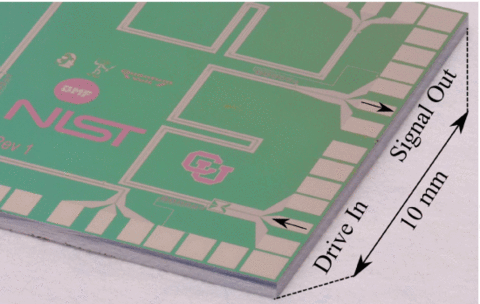
CTL in collaboration with the University of Colorado has demonstrated a tenfold increase in the amplitude of microwave-frequency waveforms generated by a quantum-defined superconducting voltage source, with an open-circuit signal of 17.56 mV rms at 1.005 GHz. This milestone creates new opportunities for improving measurements of high-accuracy RF voltage and power for modern high-speed communications components and instruments.
The team has published a paper titled: “A Microwave Quantum-Defined Millivolt Source” describing how new circuit design and signal processing techniques help further advance the project’s excellence in the area of dc, ac, and RF voltage sources. The voltage source is an RF Josephson arbitrary waveform synthesizer (RF-JAWS) that utilizes a circuit that is cooled to 4 K and is composed of an array of 4500 Josephson junctions. This introduces a new zero-forcing equalization technique for reducing distortion in drive current pulse patterns. The two-tone synthesis allows simultaneous verification of the correct operation of the voltage source using time-efficient low-frequency measurement techniques as well as slower microwave measurements. This advancement works towards NIST’s goal of advancing quantum-based standards for radio frequency communications to eliminate costs and overhead in calibration and traceability chain measurements by providing self-calibrated, quantum-based standards and automated measurement capability to communication and instrument manufacturers.
A Microwave Quantum-Defined Millivolt Source
Authors: Akim A. Babenko, Nathan E. Flowers-Jacobs, Gregor Lasser, Justus A. Brevik, Anna E. Fox, Paul D. Dresselhaus, Zoya Popović, and Samuel P. Benz.

